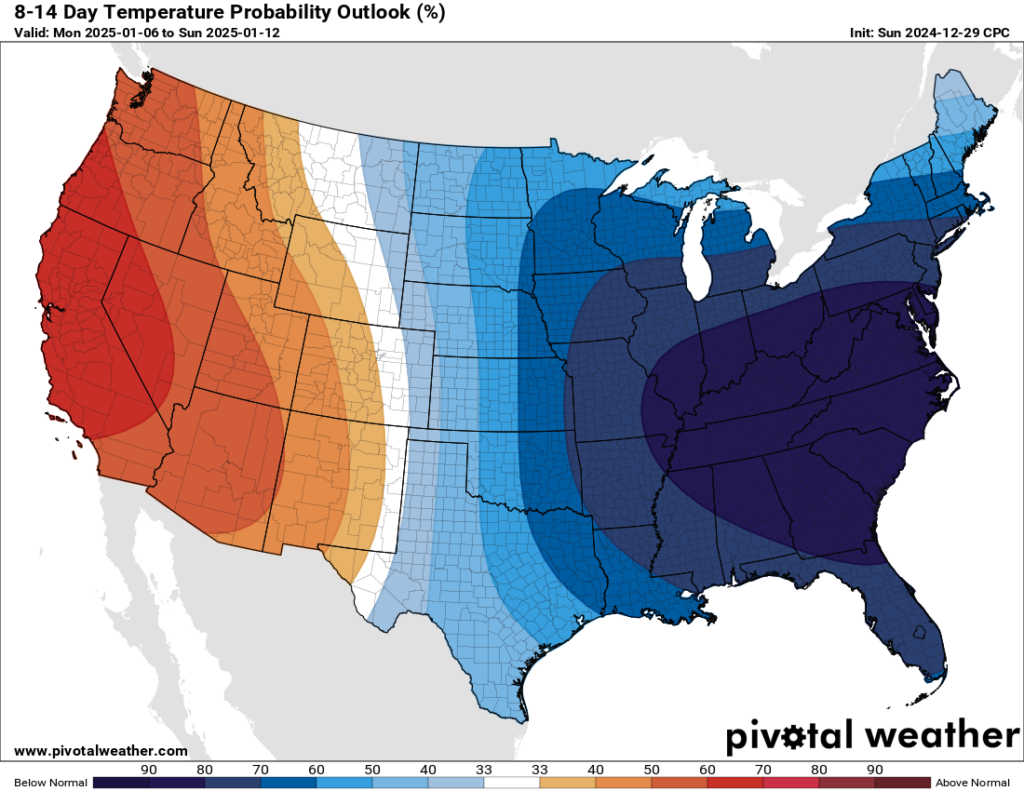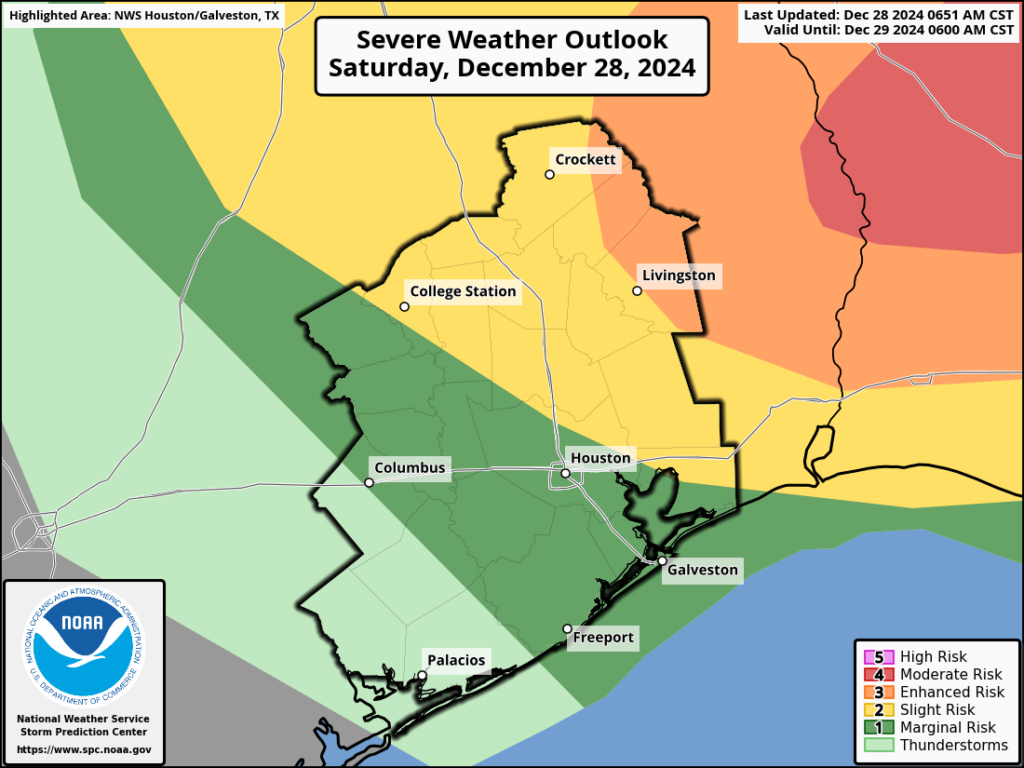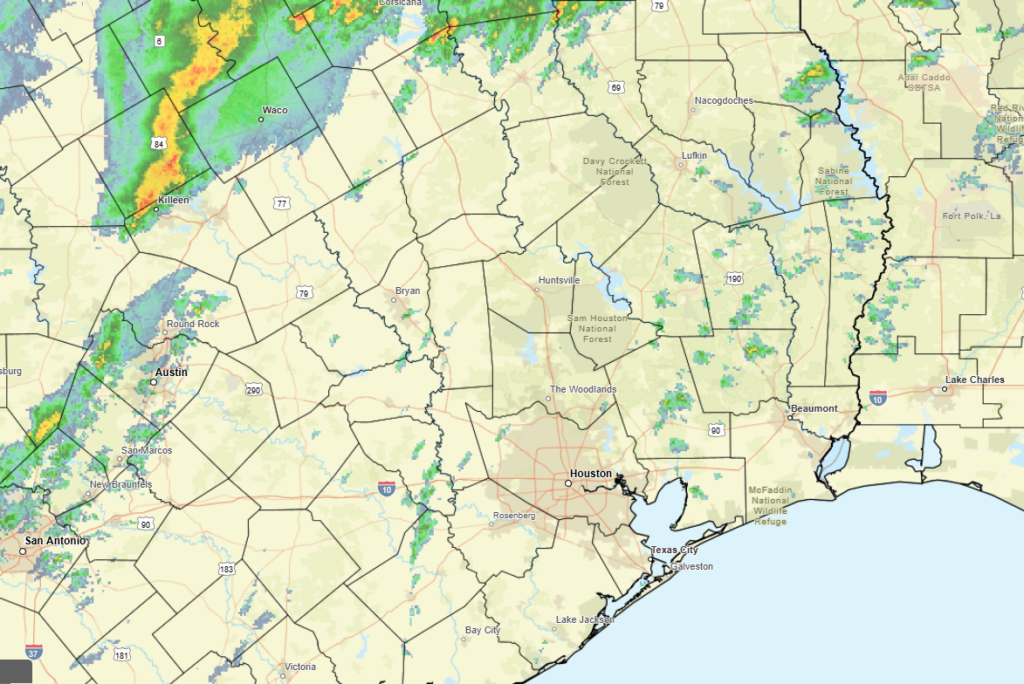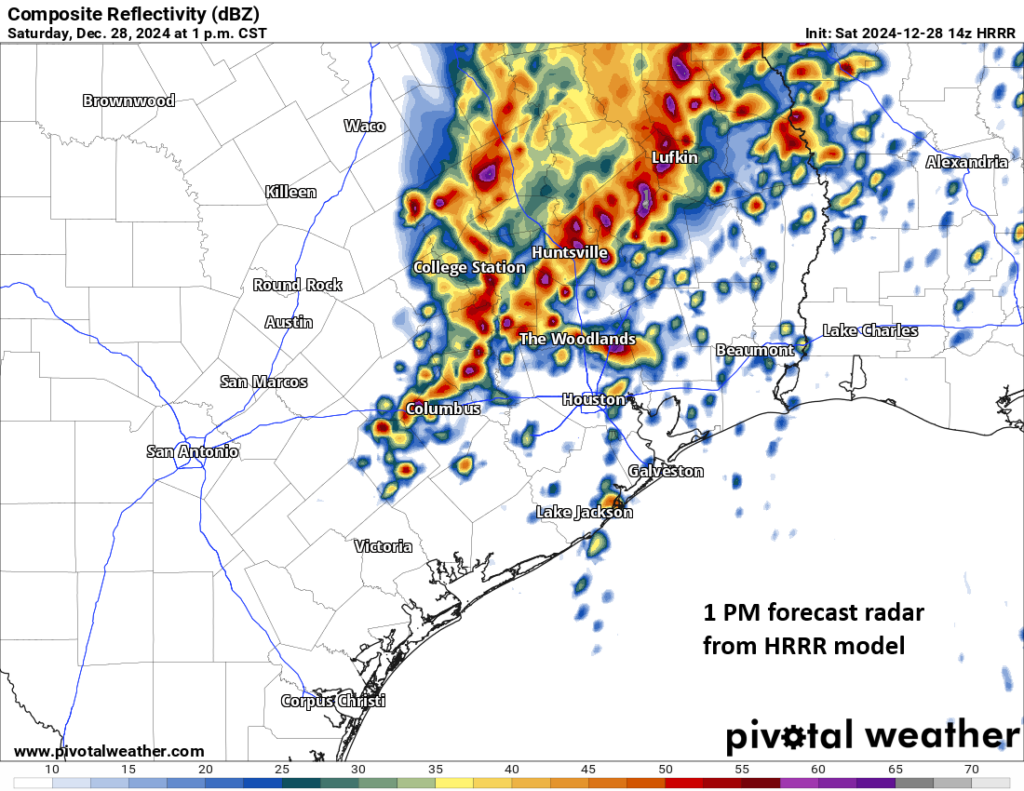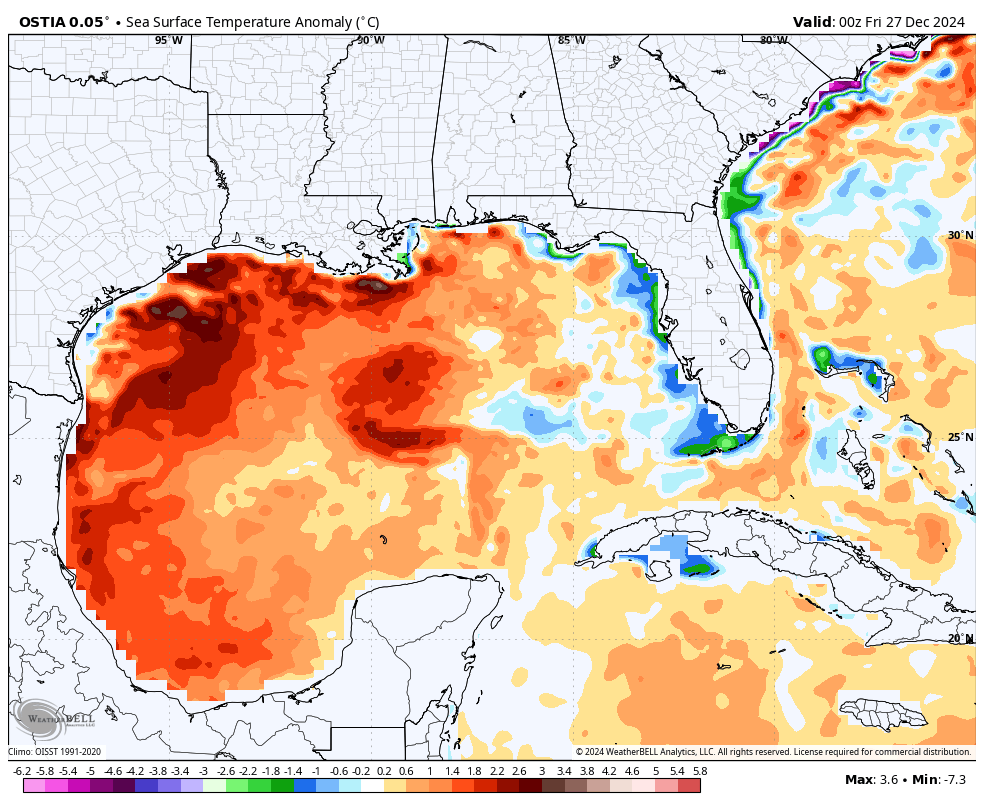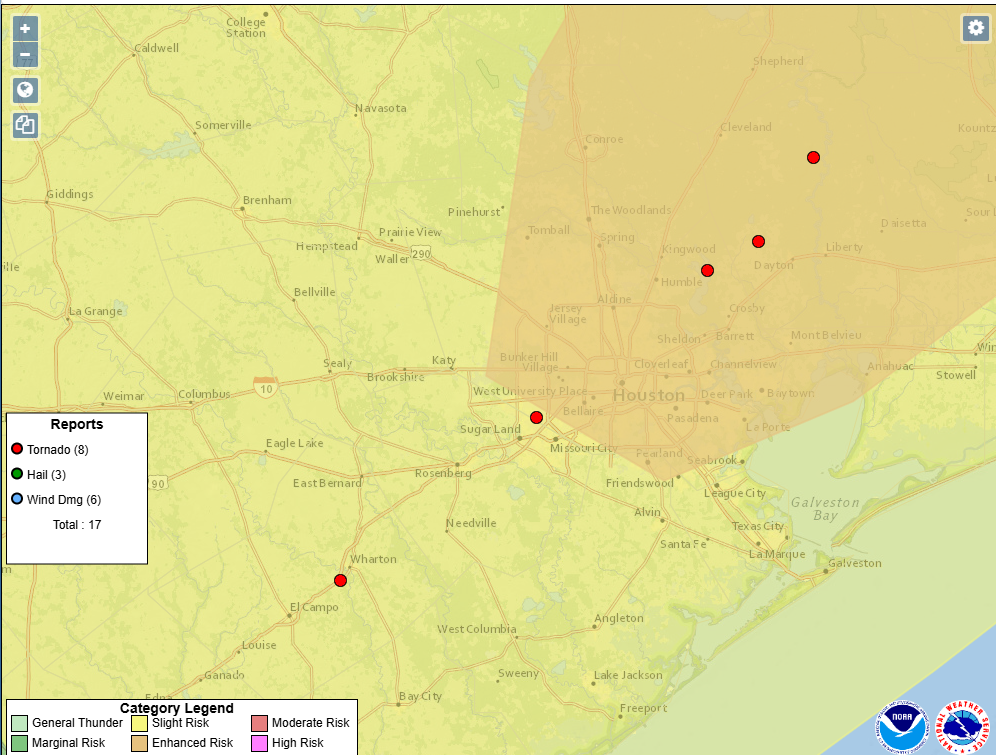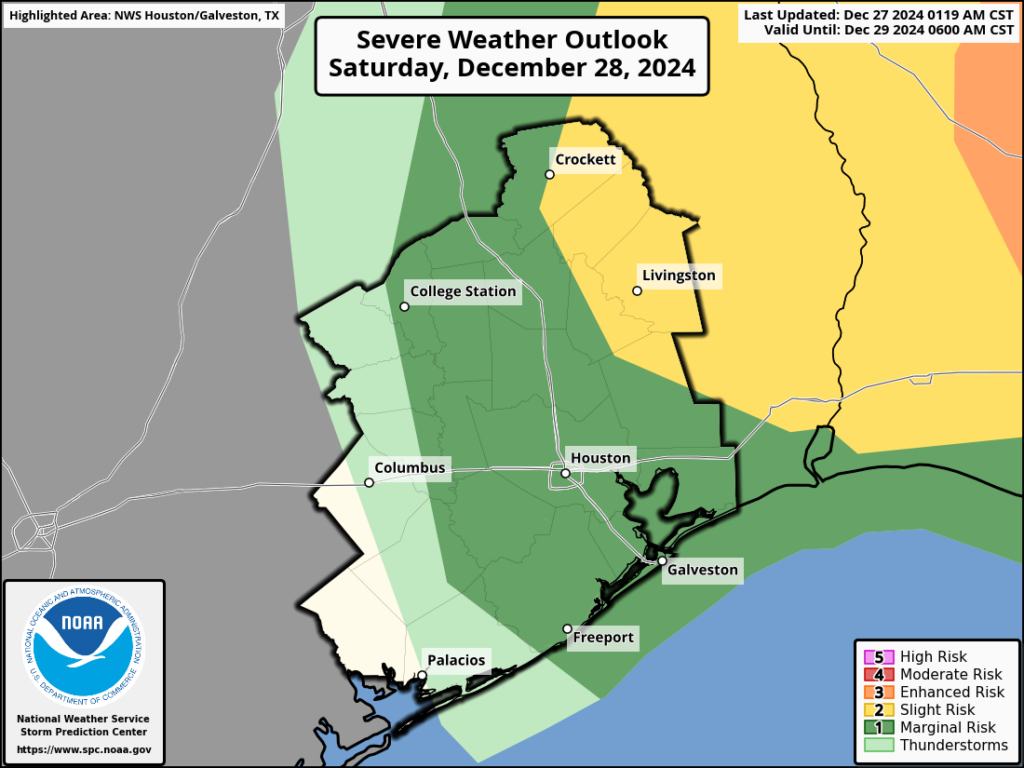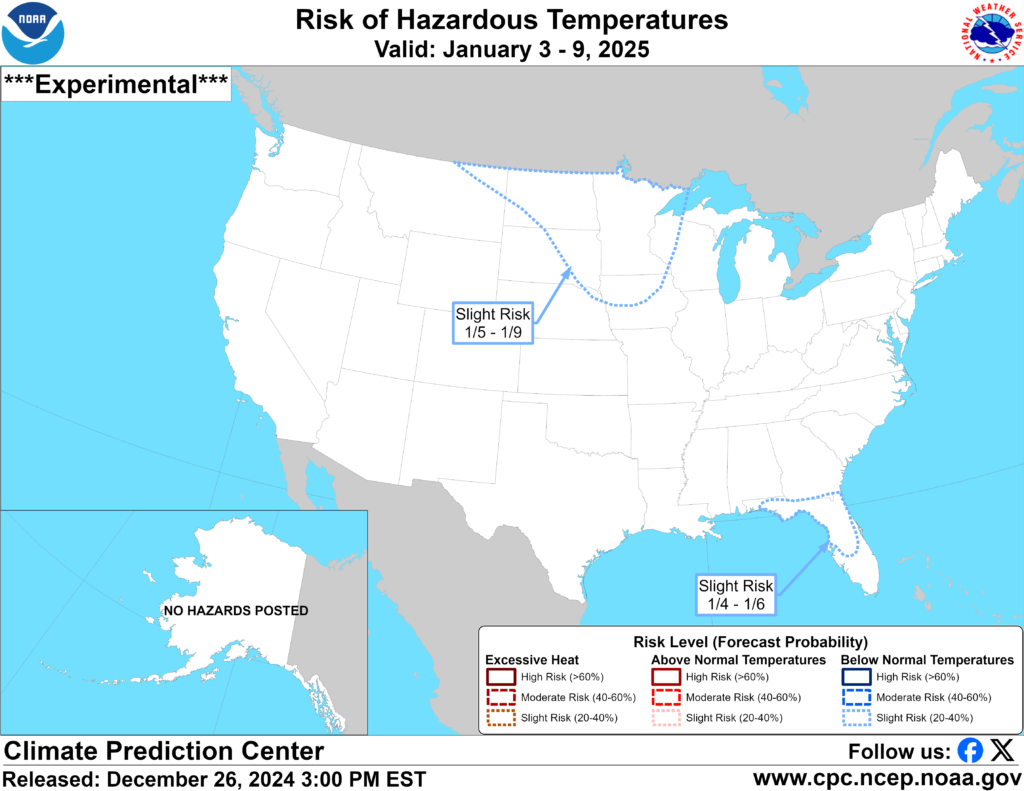In brief: If you’re celebrating New Year’s Eve tonight, you’ll want a sweater or at least a light jacket as conditions will turn chillier after sunset. With a couple of exceptions, the first few days of the new year will be mild in Houston. But we’re still watching for an incursion of Arctic air about a week from now.
New Year’s Eve hope
It’s been a year, Houston! As I write this on Tuesday morning, the horizon is in that liminal state between twilight and morning, with an orange-ish hue in the southeastern sky, and a fading gray to the northwest. This is my favorite part of the day, so full of potential and promise. Who knows what it will bring?
And so it goes with the new year. In reality, New Year’s Day is just part of an arbitrary calendar imposed on nature. Nevertheless, the end of the year offers us time to reflect on what has gone past, and what is yet to come with the turning of the page. In some ways, this past year was a great year. In other ways, with Hurricane Beryl, the derecho in May, and the torrid summer, it was not a great year. I do not know what this coming year will bring weather-wise (ok, I’m pretty sure there will be plenty of humidity), but I do know that there are some things in life I can control. And that starts with being the best father, husband, and forecaster I can be. And so on this gorgeous morning, the final one of the year 2024, I am hopeful.

New Year’s Eve weather
The final day of this year will be unlike much of what has come before it: chilly and dry. High temperatures today will reach the mid- to upper-60s for many locations, it is true, with sunny skies. But there will be a decent northerly breeze all day, gusting up to 20 mph. And as the Sun sinks toward the horizon this afternoon and evening, the temperatures will drop. It will be about 50 degrees at midnight tonight in Houston, but with the breeze it will feel cooler. Skies will be clear to ring in the new year. Lows by Wednesday morning will reach the mid-40s in Houston, with cooler conditions for outlying areas, and somewhat warmer conditions right along the coast.
New Year’s Day
Expect a fine, sunny day with highs in the low-60s. Some clouds will start to build on Wednesday night as winds turn more easterly. Lows will reach about 50 degrees.
Thursday
Skies will turn mostly cloudy, with highs in the mid-60s. Some light rain, perhaps in the form of mist or light showers, will be possible on Thursday or Thursday night. But I don’t expect this to be impactful at all. Lows will again drop to around 50 degrees as a weak front moves in.
Friday and Saturday
This part of the weekend looks to be mostly sunny, with highs in the low- to mid-60s and lows in the 40s on Friday night, and a bit warmer on Saturday night. We have no weather concerns these days.
Sunday and Monday
Sunday will be warmer, and partly sunny with highs likely in the low- to mid-70s. At some point, perhaps on Sunday evening, Sunday night, or early Monday, a stronger cold front is likely to push into the area. This could also bring a decent chance of rain, although accumulations look fairly slight.

How cold will things get?
Next week still looks quite a bit colder in Houston, with low temperatures in the 30s beginning on Tuesday or Wednesday morning. Whether we see a freeze during the first half of next week in Houston, I’m not sure. It still looks like a secondary push of Arctic air will bring some colder nights by Friday or Saturday of next week. Much of the area probably will freeze at that point. But will it be a light freeze, or will temperatures drop into the 20s? We just cannot say. Also there continues to be a low-end chance for some wintry precipitation, including the possibility of some snow, next Thursday or Friday. But at this distance our confidence in a specific forecast is very, very low.
No post tomorrow
In celebration of New Year’s Day there will be no post on New Year’s Day. Fortunately, the weather for the rest of this week looks pretty calm.



